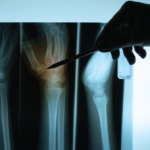“By all metrics and for both sexes,” the researchers write, “the hip BMD T-score [lower of femoral neck and total hip values] for the BCT analysis performed at least as well as DXA testing for assessing risk of hip fracture.”
They note that BCT analysis of 86% of the available CT scans was successful and that the latter had been performed on 80 different CT scanners in 14 hospitals over a nine-year period, supporting “technical robustness in a broad clinical setting.”
The authors concluded that if BCT analysis were routinely used in individuals over age 65 “who have an available hip CT when a recommended DXA test is either missing, not available, or inconvenient … such a ‘second front’ in osteoporosis screening, could appreciably increase the number of patients identified as being at high risk of hip fracture.”
Dr. Timothy Ziemlewicz, a radiologist at the University of Wisconsin School of Medicine and Public Health, Madison, tells Reuters Health by email that osteoporosis screening rates are low, even in those eligible under U.S. Preventive Services Task Force guidelines.
“An add-on analysis of imaging data already available stands to improve these screening rates and also offer screening to patients who are not covered within guidelines, but nevertheless have potential fracture risk,” says Dr. Ziemlewicz, who was not involved in the study.
“Abdominopelvic CT is a common study, particularly in the Medicare population,” he added. “An opportunistic screen can allow detection and treatment of osteoporosis and therefore has the potential to decrease hip fractures.”
He did have a few caveats about this study, including the relatively long period—up to three years—between DXA and CT scans, over which there could be a significant change in BMD, and variations in beam energy in the CT scans.
“Overall, this study adds to the idea that CT examinations of the abdomen and pelvis performed for other indications provide a great opportunity to improve osteoporosis screening rates,” Dr. Ziemlewicz says.
Three of the authors of the new report have financial interests in O.N. Diagnostics, which performed the BCT analyses for the study and developed VirtuOst, the software used for those analyses.
The study was supported by Amgen and Merck, which make osteoporosis drugs.
Reference
- Adams AL, Fischer H, Kopperdahl DL, et al. Osteoporosis and hip fracture risk from routine computed tomography scans: The fracture, osteoporosis and CT utilization study (FOCUS). J Bone Miner Res. 2018 Apr 17. doi: 10.1002/jbmr.3423. [Epub ahead of print]

